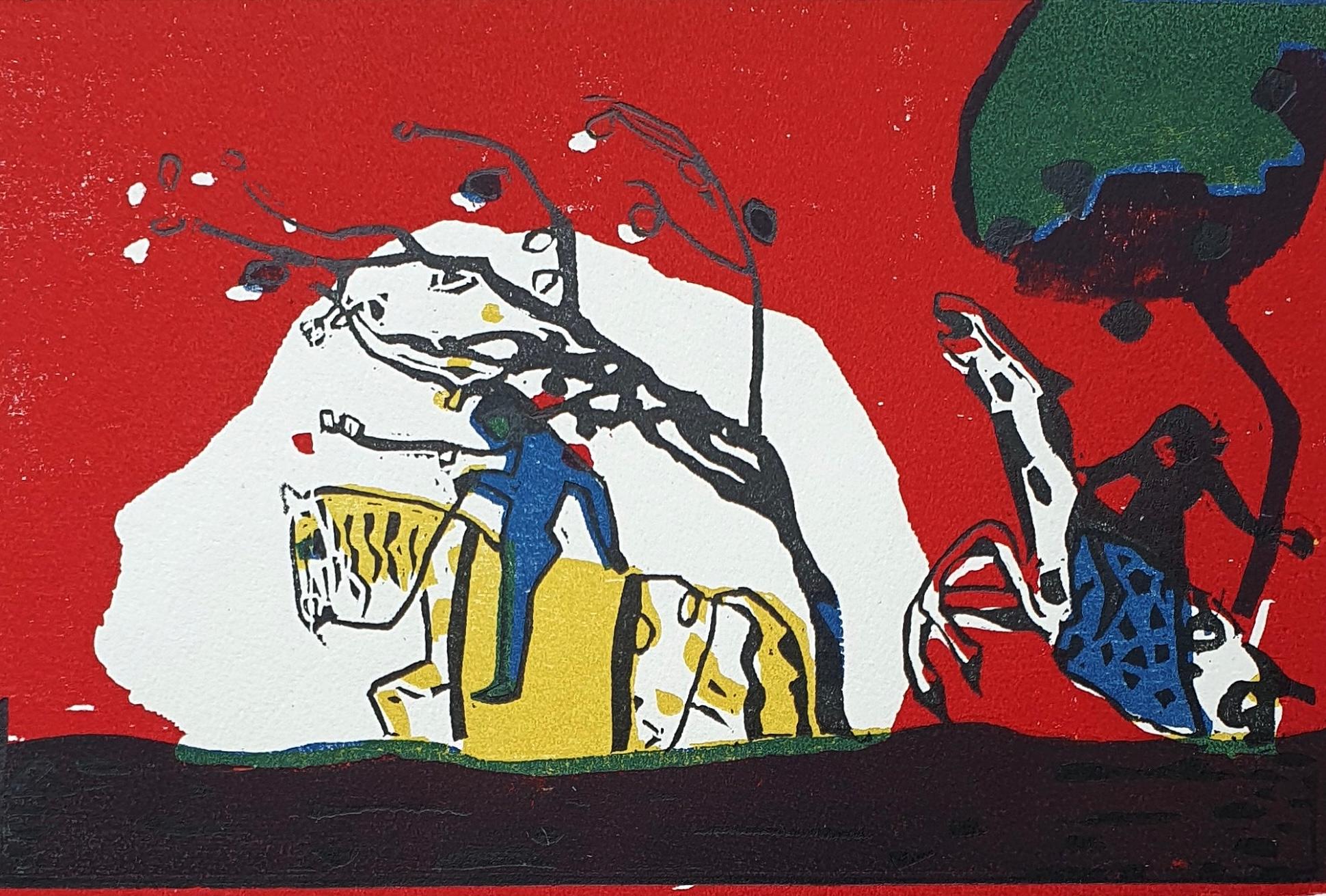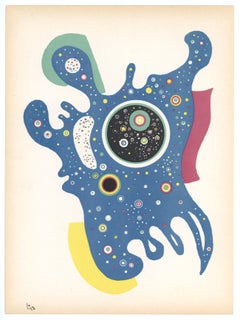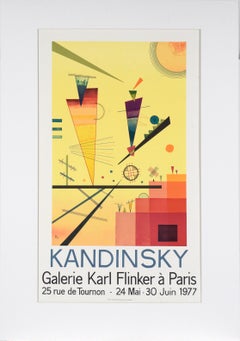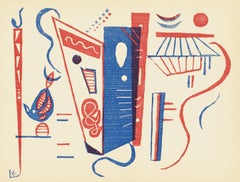Questions & Answers
Our trusted network of 1stDibs sellers answer common questions
How many paintings did Kandinsky paint?
1 Answer

No one knows for sure how many paintings Kandinsky painted over the course of his life. Art historians estimate that he produced at least 500 oil paintings. However, there may be considerably more works that are forever lost. Because the Nazis labeled Kandinsky a degenerate, it is possible that a great number of his pieces were destroyed during the 1930s and ’40s. On 1stDibs, explore a range of Wassily Kandinsky art.
1stDibs ExpertAugust 8, 2024
Related Questions
- How many paintings did Michelangelo paint?1 Answer
- How many paintings did Modigliani paint?1 Answer
- How many paintings did Monet paint?1 Answer
- How many paintings did Matisse paint?1 Answer
- How many paintings did Raphael do?1 Answer
Shop for Wassily Kandinsky Art on 1stDibs
"Stars" original lithograph
By Wassily Kandinsky
Located in Henderson, NV
Medium: original lithograph. Printed in 1938 and published in Paris by Teriade for the art revue Verve (volume 1, number 2). Kandinsky was invited to contribute an original compositi...
Category
1930s Expressionist Abstract Prints
Materials
Lithograph
Kandinsky at Galerie Karl Flinker - 1977 Exhibition Poster - in Ink on Paper
By Wassily Kandinsky
Located in Soquel, CA
Kandinsky at Galerie Karl Flinker - 1977 Exhibition Poster - in Ink on Paper
Poster with a reproduction of "Merry Structure" by Vassily Kandinsky (Russian, 1866-1944). This posted i...
Category
1970s Abstract Geometric Abstract Prints
Materials
Paper, Ink, Lithograph
Wassily Kandinsky, Komposition, from XXe siecle, 1939
By Wassily Kandinsky
Located in Southampton, NY
This exquisite woodcut by Wassily Kandinsky (1866–1944), titled Komposition (Composition), from the album XXe siecle, Chroniques du jour, 13 rue Valette (5e), Directeur G. di San Laz...
Category
1930s Modern Abstract Prints
Materials
Woodcut
$7,196 Sale Price
20% Off
Free Shipping
Wassily Kandinsky, The Stars, from Verve, Revue Artistique et Litteraire, 1938
By Wassily Kandinsky
Located in Southampton, NY
This exquisite lithograph by Wassily Kandinsky (1866–1944), titled Les etoiles (The Stars), from Verve, Revue Artistique et Litteraire, Vol. I, No. 2, ...
Category
1930s Modern Abstract Prints
Materials
Lithograph
$1,276 Sale Price
20% Off
Free Shipping
Bunt im Dreieck
By Wassily Kandinsky
Located in London, GB
Wassily Kandinsky
Bunt im Dreieck, 1965
Lithograph in colours on Arches paper
Signed in the plate
50 x 37.5 cm
Sheet: 64 x 45.7 cm
Framed: 69.2 x 56 cm
Category
1960s Abstract Geometric Prints and Multiples
Materials
Lithograph
Wassily Kandinsky, Motif from Improvisation 25, from XXe siecle, 1938
By Wassily Kandinsky
Located in Southampton, NY
This exquisite woodcut by Wassily Kandinsky (1866–1944), titled Motiv aus Improvisation 25 (Motif from Improvisation 25), from the album XXe siecle, Chroniques du jour, 13 rue Valett...
Category
1930s Modern Abstract Prints
Materials
Woodcut
$5,596 Sale Price
20% Off
Free Shipping


